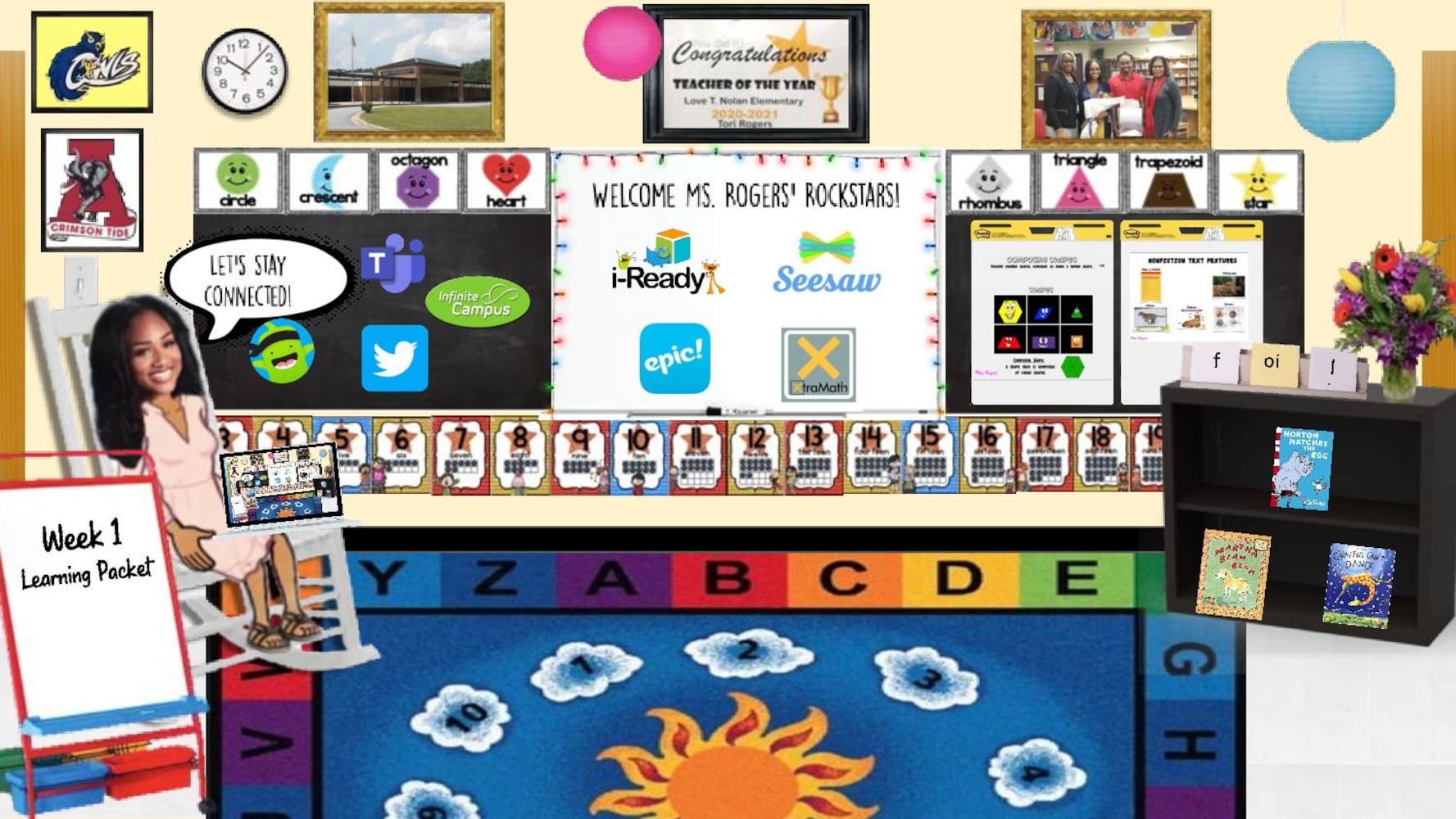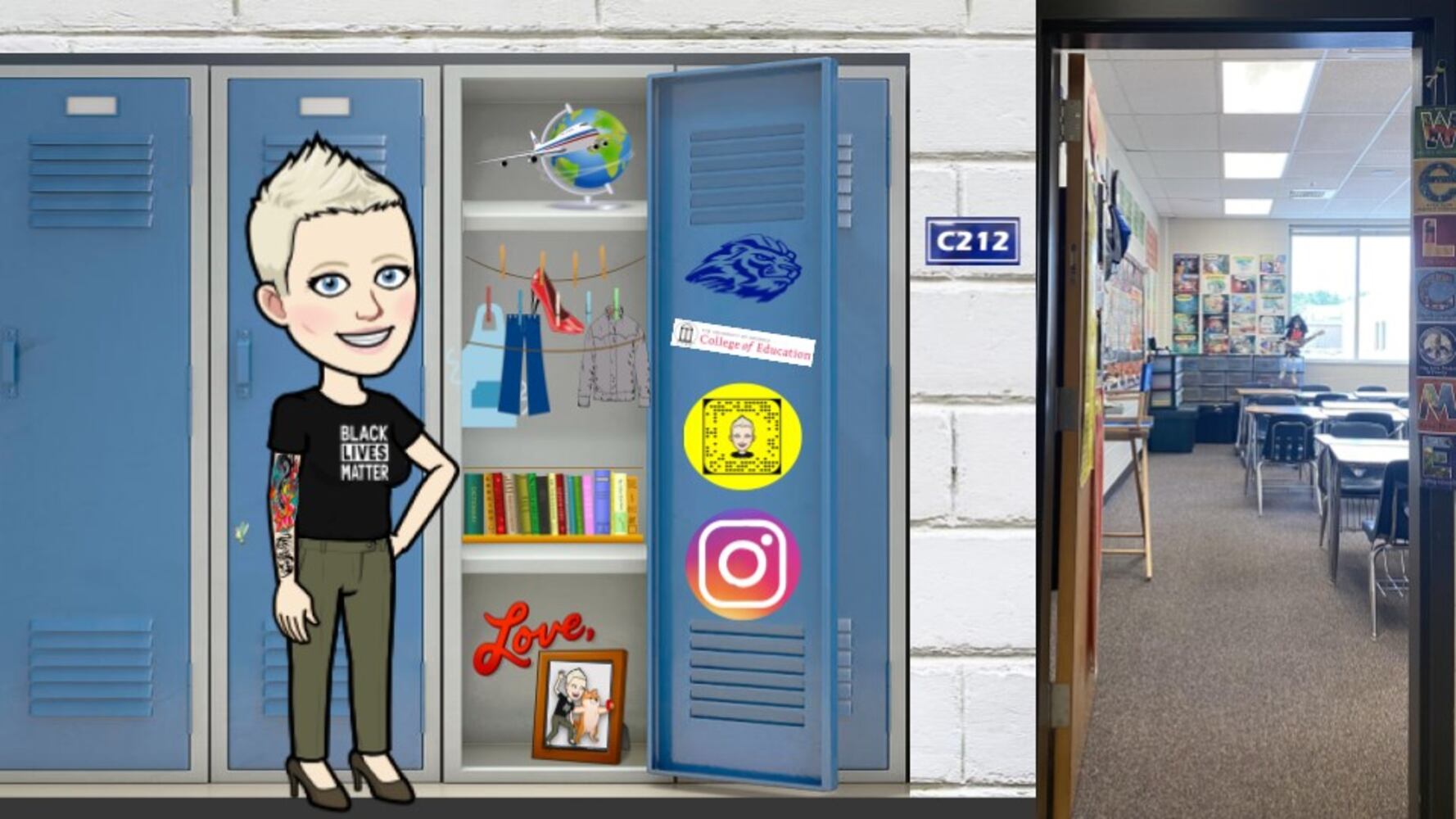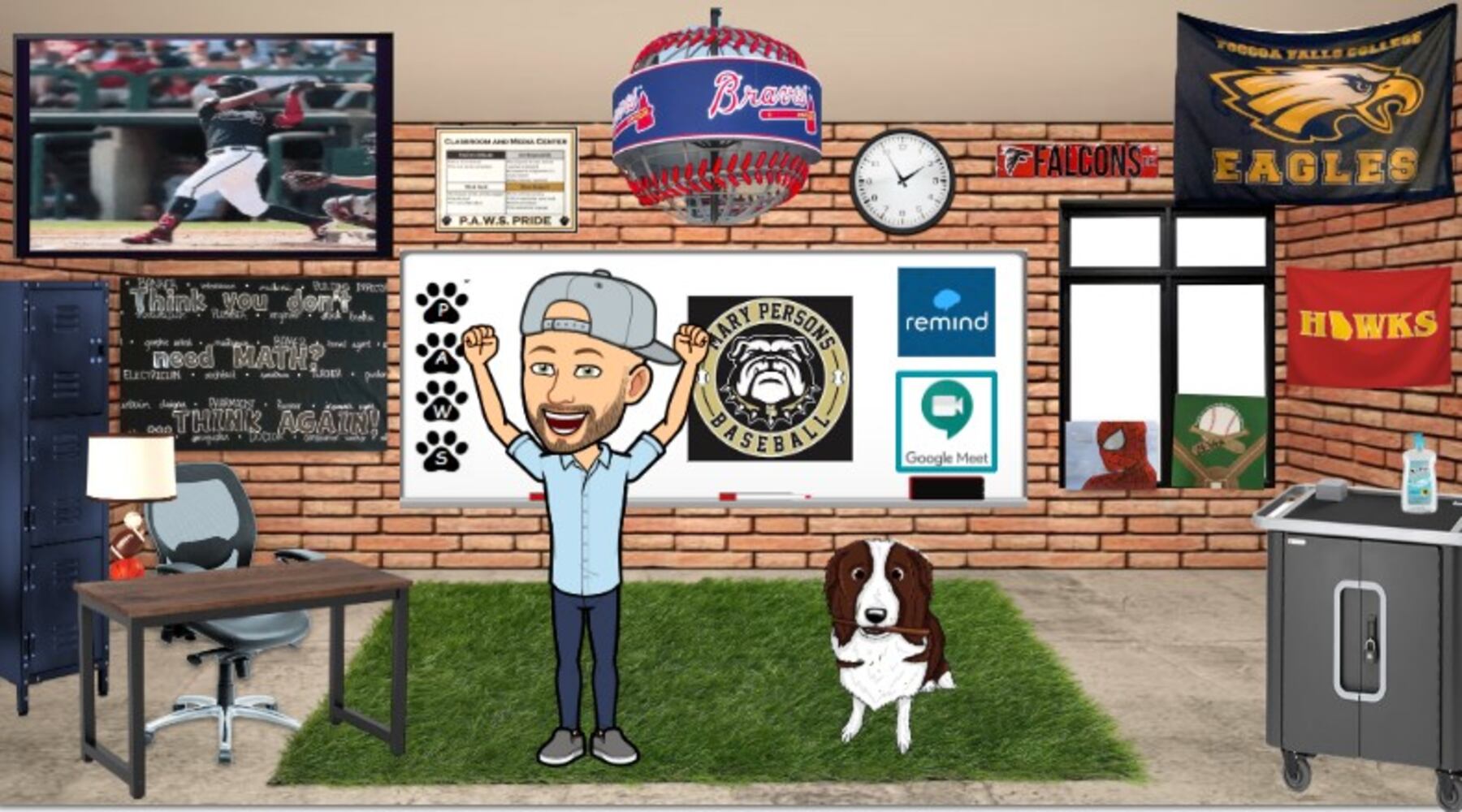Many of Tiffany Lester’s students at DeKalb PATH Academy will meet their science teacher when school starts online Monday.
They won’t spot her purple hair from down the hallway. Her therapy dog, Gary Fishlegs, won’t wander around the classroom like he usually does, seeking out the kids having a bad day so he can offer furry comfort from a cozy couch.
Instead, Lester and her fifth graders will be separated by computer screens.
That’s why she built a virtual classroom.
Credit: ALYSSA.POINTER@AJC.COM
Credit: ALYSSA.POINTER@AJC.COM
Lester is one of a host of teachers to create elaborate and interactive online classrooms complete with desks, book shelves and personalized avatars. (The cartoon version of Lester also sports purple hair. Gary gets his own room.)
The objects and images inside each scene — think of a finely furnished dollhouse — contain links that send students to educational games, daily schedules, class rules, videos, reading materials and other helpful resources.
“You get to pick out the desk that you always wanted. … I can have these huge windows,” Lester said. “It’s the one time teachers don’t have to be on a budget.”
The pandemic upended education when school buildings closed in mid-March. Teachers moved to online lessons — unfamiliar territory for many — and then waited anxiously to find out the plan for this school year. Students in DeKalb, Cobb and Fulton counties begin classes online Monday after delays to the original start date.
Battered by uncertainty and concerned about forging connections with students learning remotely, teachers built functional fantasylands.
“It’s fun and creative in a space where teachers feel like they don’t have a lot of control. At least I can control what’s happening in my virtual classroom,” said Jennifer Hall, an educational technology specialist for Atlanta Public Schools.
Hall’s nickname is the “Bitmoji whisperer” because she’s helped about 100 people design or makeover their cartoon avatars. Her own likeness, whom she calls “Jenmoji,” bears a striking resemblance to her creator, except the online Jen is “ageless and timeless.” No gray hair, no wrinkles.
“People were like, ‘I need to have ways to engage my students,’ and the virtual classrooms just took off,” she said.
Teachers channeled the creative energy they’d usually pour into making construction-paper bulletin boards and laminating flashcards into the online world. Designing virtual spaces has became the back-to-school rite of this new educational era.
Many built rooms this summer, on their own time.
Some created spaces from scratch, pulling images and personal photos into Google Slides. Others purchased templates that allow teachers to customize their digital nooks in their favorite style, from rustic farmhouse to mid-century modern.
Hundreds of designs are for sale on popular online marketplaces, such as Teachers Pay Teachers and Etsy. This month, more than a third of all purchases on Teachers Pay Teachers have been for digital resources, which includes templates and other tools. That’s up significantly from last August, when digital resources accounted for 10% of sales, according to the site.
Credit: Tiffany Lester
Credit: Tiffany Lester
Lester got ideas for her online rooms from Facebook. The private group “Bitmoji Craze for Educators” launched in April and now has more than 433,000 members who share tips and examples.
In her online “escape room,” students can explore the scene to uncover clues that help them get to know their teacher. When they click on an animal sculpture, they’ll discover Lester once had a pet llama. The virtual bookshelves hold copies of “Catcher in the Rye” and a Jane Goodall memoir, two of Lester’s favorites. Students will learn she studied zoology at Colorado State University if they click an icon on her virtual laptop displayed on her sleek virtual desk.
Lester typically spends the first couple weeks each school year getting to know her students and building relationships. But now, except for when she teaches via video, she’s flying blind.
If a friendly cartoon and virtual classroom can help with introductions, she and other teachers are willing to try it.
Credit: ALYSSA.POINTER@AJC.COM
Credit: ALYSSA.POINTER@AJC.COM
Tori Rogers, a first-grade teacher at Love T. Nolan Elementary School in Fulton County, carefully recreated her classroom, matching tiny details. Books on her virtual shelves link to YouTube videos of her reading those stories. Alphabet letters send students to a phonics lesson where she reviews the blending sounds “oi” and “oy.”
Rogers created her first virtual classroom last spring and plans to update the scene regularly.
“I did it definitely to bridge the gap for parents and students to be able to easily access the different sites and resources that we use,” she said. “I want them, emotionally, when they look at my classroom to think, ‘Wow this is fun.’”
Credit: Tori Rogers
Credit: Tori Rogers
Pickens High School dramatic writing teacher Valerie Boehm is preparing to teach both in-person and online courses this year. She wanted a more visual way of interacting with students online, and plans to swap out the palm trees in her virtual classroom for pumpkins this autumn.
“If I can be anywhere, I’m going to be at the beach. It’s my dream classroom,” she said, of the cheerful scene with wood floors, her wedding photo and a steaming cup of coffee.
Embedded within are links to class texts, her email address, the Georgia Film Academy and a welcome video.
Credit: Valerie Boehm
Credit: Valerie Boehm
Ronald Catlin featured children’s books whose main characters are Black children in his virtual room. As an education technology specialist at Kennesaw State University, he supports teachers at two Fulton County schools with their technology needs. He said many teachers are using the virtual spaces to add personality and boost engagement.
“The students are already having mixed feelings about being online so much. They are missing their friends and not having a chance to interact,” he said.
Catlin dressed his avatar in a Black Lives Matter T-shirt and made sure to pick the perfect red office chair.
“You kind of get stuck in this vortex of interior decorating. It becomes addicting,” he said.
Credit: Ronald Catlin
Credit: Ronald Catlin
To help educators with the skills they need to create the spaces, Jessica Cooper offers online training sessions. She charges a $20 fee. The first two sessions sold out. She’s also created a virtual office space for her work as a DeKalb County middle school counselor.
It’s wallpapered in her favorite color, pink, and directs students where to go to request a course change. She can also link to pandemic safety tips and videos about coping with grief and anxiety.
After schools closed last spring, online attendance lagged. Cooper searched for ways to connect with her students and then spent about six hours completing her first room. She’s much faster now.
Credit: Jessica Cooper
Credit: Jessica Cooper
Local educators have made virtual replicas of school libraries, principals’ offices and music rooms. Hall, the APS technology specialist, has led Bitmoji training sessions for international conferences and Atlanta’s fine-arts teachers.
In addition to being fun and helpful, it shows students that their teacher has gone the extra mile, she said, during a recent phone interview.
As she spoke, an email popped into her inbox. She read it out loud: “Can you provide me some help with my Bitmoji classroom?”




































